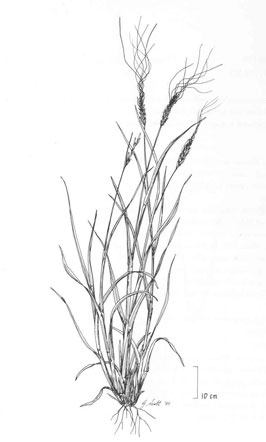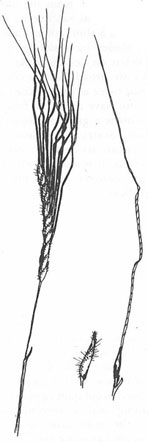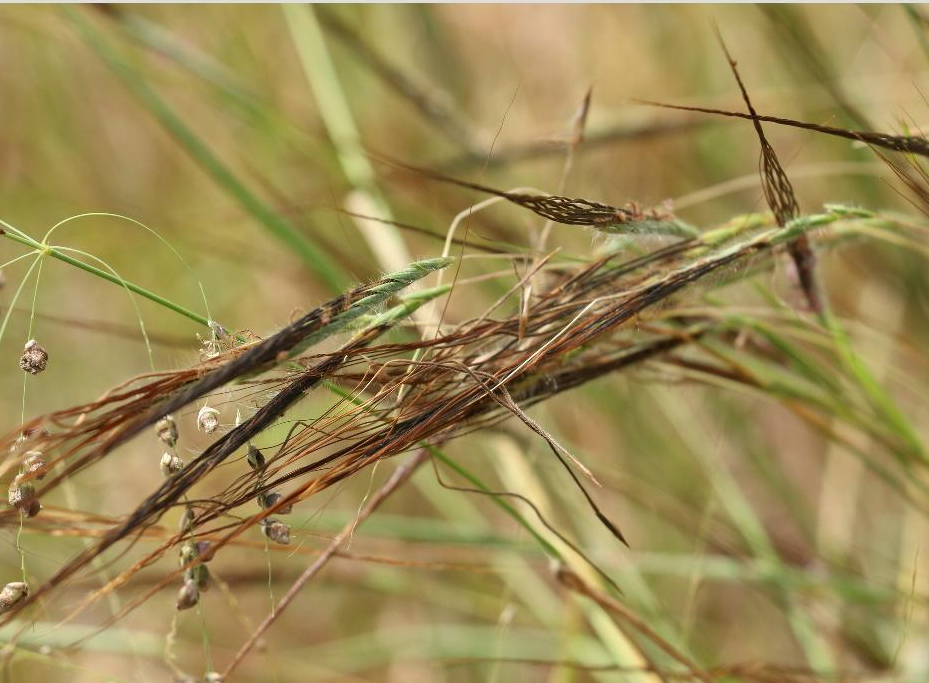Black speargrass in Queensland
Black speargrass (Heteropogon contortus) is a widespread, native perennial grass which is distributed throughout much of eastern Queensland particularly in areas receiving between 600 mm and 1,000 mm annual rainfall. Before European settlement, this same area was dominated by kangaroo grass (Themeda triandra). Kangaroo grass declined substantially because it was intolerant of grazing and was replaced over time by black speargrass. There is evidence that this native species is now in decline throughout much of Queensland. In northern Queensland, extensive areas that were once dominated by black speargrass are now dominated by inferior grasses such as Indian couch (Bothriochloa pertusa).
The atlas of living Australia has a distribution map and detailed classification information.
Soils
Black speargrass grows on a wide variety of soil types. It grows best on coarse textured soils and does not grow well on clay soils.
Growth
Black speargrass is a summer growing perennial grass. It usually starts growing with storms in spring and continues throughout summer until early April, depending on rainfall. Growth occurs from small tiller buds located at the base of existing tussocks. Although most of these new tillers (or stems) emerge in spring some new tillers do emerge later in the summer.
During summer, these tillers keep becoming taller until about March when some tillers flower and produce seed.
By late April when the tussocks have finished seeding the characteristic ‘bunches’ of seeds become prominent. At this stage, the seeds are dormant and they eventually fall to the ground. Dormancy is usually overcome by the increasing soil temperatures with increasing daytime temperatures during spring.
 Figure 1. Whole plant |
 Figure 2. Seed head |
Photo supplied by Greg Tansey (2022)
Plant turnover
Most black speargrass tussocks live for around five years although one recent study found some tussocks survived for 15 years. This five year average life span means that regular seedling recruitment is necessary to maintain plant density. Seedlings usually appear after the first spring/early summer storms. The number of seedlings usually depends on how much seed is set in the previous autumn.
Seedling recruitment is substantially boosted by burning within a few days of receiving the first rainfall event of 20mm or so, usually in spring.
Reaction to grazing
This species responds well to moderate grazing pressure. However, where grazing pressure is too high over a number of years, the death rate of existing tussocks is greater than seedling establishment, leading to a decline in population.
Resting over the summer growing season is very beneficial to black speargrass as the tussocks can rejuvenate. Resting pastures over autumn will aid to maximise seed production. A guide to keeping your speargrass pastures productive can be found here. Futurebeef has detailed information on pasture management in the Burnett region and wet season spelling, that may help in maintaining your speargrass pastures.
Line drawings from ‘The Grasses of Southern Queensland’ by J.C. Tothill and J.B. Hacker (1983).
